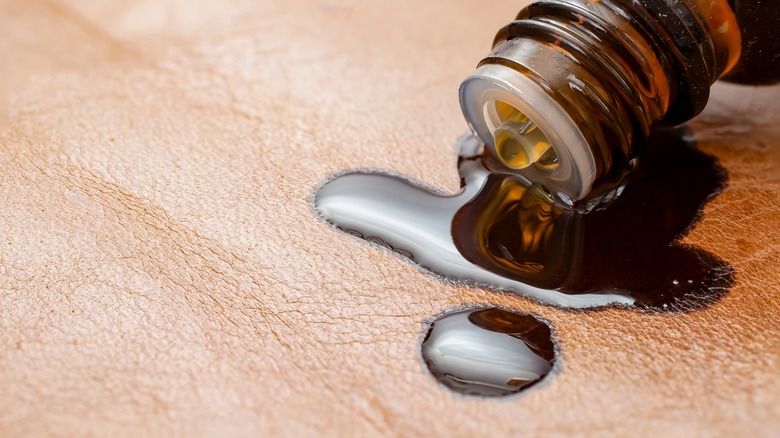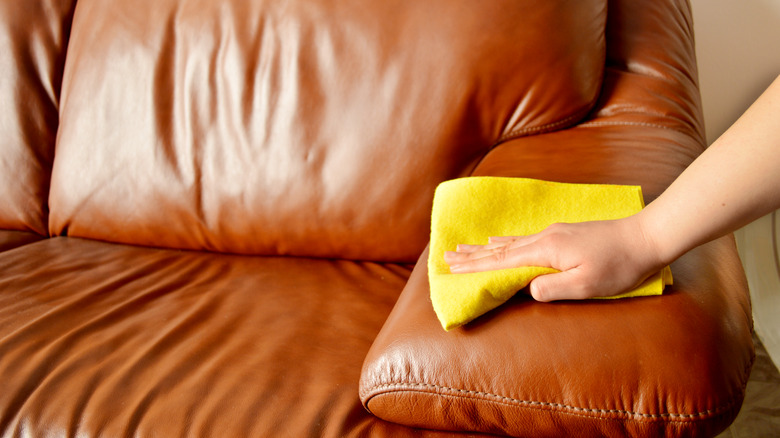Should You Be Using Baking Soda To Tackle Oil Stains On Your Leather Furniture?
If you've spilled a greasy substance on your leather couch or chairs, you're likely worried about the stain and looking for the quickest option to remove the oil. While baking soda may seem like the easiest way to clean your leather couch, you might want to steer clear. Many online articles state that baking soda can be spread over leather to absorb the oil or made into a paste with water to get greasy stains out of leather, but there is a chance it will hurt the finish on your leather, the fabric itself, or even possibly worsen the stain.
When cleaning leather, it's important to be extremely careful, as it is a delicate material that can be easily harmed. Depending on the type of leather you're working with, it's safest to stick to a commercial cleaner that's made to treat leather without damaging it. If you use baking soda to attempt to remove a stain one time, your leather might be alright, but it's not the best choice and will do damage with continued use.
Why you shouldn't use baking soda for stains on leather
Sodium bicarbonate, commonly referred to as baking soda, is generally considered a gentle cleanser, but it is somewhat abrasive and alkaline. These properties are what make baking soda so good for household cleaning, but they are also what give it the potential to harm your leather furniture. The abrasiveness of baking soda can strip the finish off your leather, making the fabric more vulnerable and prone to being scratched.
Sodium bicarbonate may also affect the color and feel of the delicate fabric, causing it to fade or dry out. Since baking soda is often used to absorb liquid and whiten fabrics, it can pull the moisture and color out of your leather. Additionally, when used for cleaning baking soda sometimes leaves behind a slight residue. While leather is great because it's a strong material, it's important to keep in mind that it isn't very forgiving of a variety of substances, and unfortunately, if you try to use baking soda to lift oil from your furniture, it may just compound the problem.
How to treat oil stains on leather furniture
The best cleaning methods for leather furniture are often rather simple, and the sooner you start treating the stain the easier it will be to remove. Since water can cause stains or damage to some types of leather, it's best to stick to commercial leather cleaners or research what substances are safe to use on the specific type of leather your couch or chairs are made of. To start treating a greasy stain, take a dry, clean cloth and gently dab away the liquid. Be careful not to rub the spot at all, as this could move the oil around the fabric and make the stain even larger or more difficult to clean.
Once you have blotted up as much of the stain as possible, put a small amount of leather cleaner onto a rag and carefully apply it to the stain. After you've finished and the cleaner has dried, use a conditioner to keep it in good condition. Surprisingly, fractionated coconut oil can be used as a conditioner to make your leather furniture look new again.


